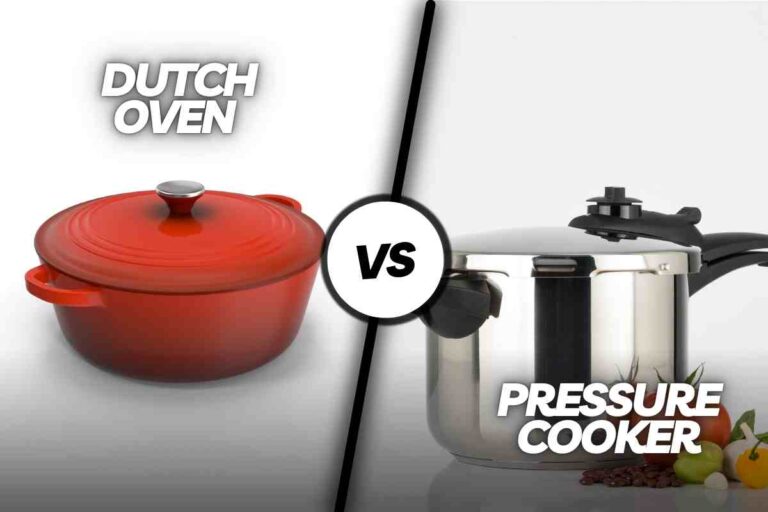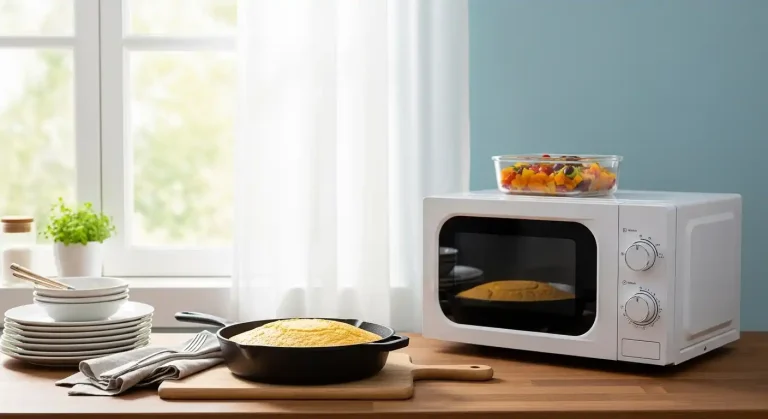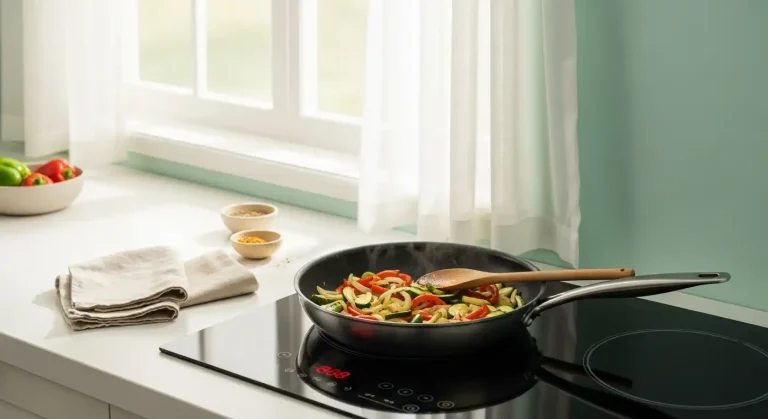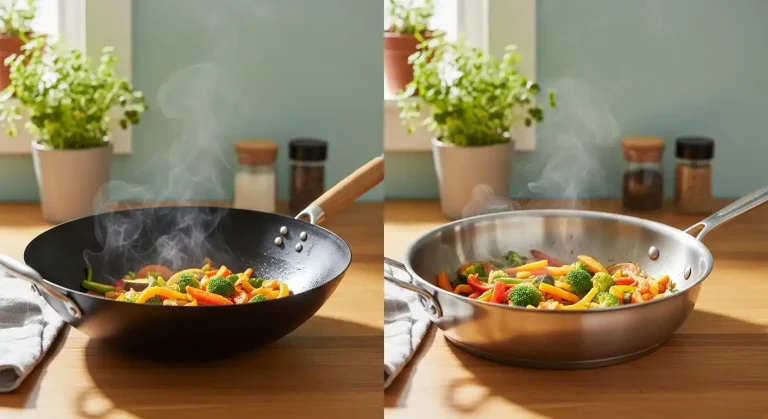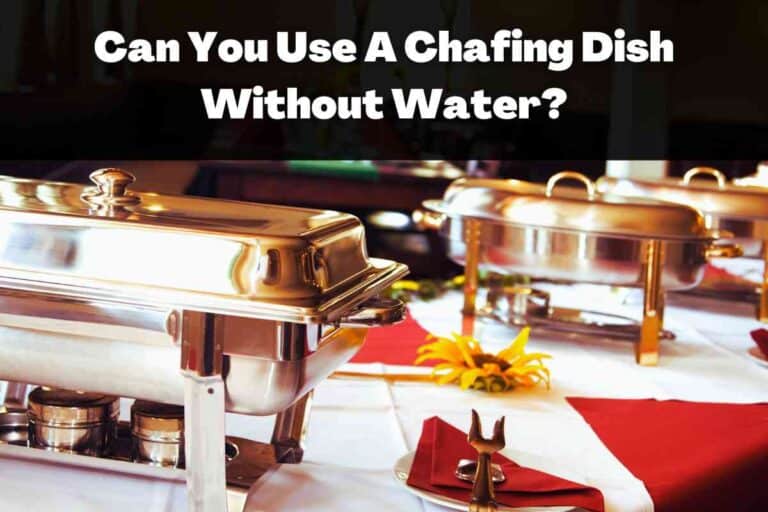How Long to Heat Chafing Dishes: A Complete Guide for Perfect Food Warmth

Chafing dishes are a go-to solution for keeping food warm at buffets, parties, and catered events.
But if you’ve ever wondered how long to heat chafing dishes properly, you’re not alone.
Heating your chafing dish correctly is essential to maintaining the perfect serving temperature, preserving food quality, and ensuring food safety.
In this comprehensive guide, we’ll explore everything you need to know about heating chafing dishes—from the ideal preheating time to tips on maintaining consistent warmth throughout your event.
🎄 Christmas & Year-End Amazon Deals !
Don’t miss out on the best discounts and top-rated products available right now!
*As an Amazon Associate, I earn from qualifying purchases.
Whether you’re a seasoned caterer or hosting your first buffet, this article will help you master the art of chafing dish heating.
What Is a Chafing Dish and Why Preheating Matters?
A chafing dish is a portable warming device designed to keep food warm without cooking it further.

It typically consists of three parts: a frame or stand, a water pan, and a food pan.
Heat is applied beneath the water pan using fuel cans (like Sterno) or electric heating elements, warming the water which then gently transfers heat to the food pan.
Because chafing dishes use indirect heat, they are not designed to cook or reheat food quickly but to maintain food temperature during service. This makes preheating crucial.
Preheating your chafing dish allows the water pan and food pan to reach an optimal temperature before adding your food.
This prevents heat loss, keeps food warm longer, and helps avoid uneven heating.
For more on how chafing dishes function, visit how do chafing dishes work.
How Long to Heat Chafing Dishes: Key Guidelines

Standard Preheating Time
Generally, it takes about 15 to 20 minutes to preheat an electric chafing dish, while gel fuel chafing dishes require 20 to 30 minutes.
This time frame allows the water pan to heat sufficiently, ensuring even heat distribution to the food pan.
If you’re heating larger quantities of food or working in a colder environment, you may need to add a few extra minutes.
Factors Influencing Heating Time
Several factors affect how long to heat chafing dishes effectively:
- Type of chafing dish: Electric models heat faster and maintain more consistent temperatures than fuel-based ones.
- Initial food temperature: Hot food requires less heating time than refrigerated or cold food.
- Food quantity: Larger amounts of food take longer to warm through.
- Ambient temperature: Cold or outdoor settings may increase heating time.
- Material: Stainless steel and aluminum conduct heat efficiently, impacting how quickly the dish heats.
Understanding these factors helps you adjust preheating time to your specific situation.
Step-by-Step Guide to Preheating Your Chafing Dish
- Fill the water pan: Add about 1 to 3 inches of hot tap water to the water pan. Avoid boiling water, as it can cause food to dry out or overcook.
- Set up the heat source: For fuel chafing dishes, insert fresh Sterno cans into the designated holders. For electric models, plug in and turn on the heating element.
- Turn on the heat: Light the fuel or switch on the electric heater. Adjust to a medium or low setting to avoid overheating.
- Cover and wait: Place the lid on the chafing dish and allow it to heat for 15–30 minutes, depending on your heat source.
- Add food: Once preheated, carefully add your hot food to the food pan and replace the lid to retain heat.
Remember to monitor the water level during service and add hot water as needed to maintain consistent heat.
🎄 Christmas & Year-End Amazon Deals !
Don’t miss out on the best discounts and top-rated products available right now!
*As an Amazon Associate, I earn from qualifying purchases.
For more detailed instructions, check out how to use a chafing dish.
Tips for Maintaining Optimal Temperature During Service

Monitor Water and Fuel Levels
As the water in the pan evaporates, heat transfer becomes less efficient.
Check water levels every 60 to 90 minutes and top up with hot water as necessary.
If you’re using fuel cans, be mindful of their burn time. A 7oz Sterno can lasts about 2.5 hours, while smaller cans last less.
Using fresh fuel is important for consistent heat—learn more at how long does chafing dish fuel last and does chafing dish fuel expire.
Keep the Lid Slightly Ventilated
Covering the food pan helps retain heat, but slightly venting the lid allows steam to escape.
This prevents condensation buildup that can make crispy foods soggy.
For advice on moisture control, see how to keep fish and chips from getting soggy in a chafing dish.
Avoid Overcrowding
Place food in a single layer to allow even heat distribution. Overcrowding traps moisture and causes uneven warming.
Common Mistakes to Avoid When Heating Chafing Dishes
Skipping Preheating
One of the biggest mistakes is adding food to a cold chafing dish.
This causes rapid heat loss, uneven warming, and can compromise food safety.
Using Too Much or Too Little Water
Too much water creates excess steam that can make food soggy, while too little water risks uneven heating or burning the water pan.
🎄 Christmas & Year-End Amazon Deals !
Don’t miss out on the best discounts and top-rated products available right now!
*As an Amazon Associate, I earn from qualifying purchases.
Stick to the recommended water level of about two-thirds full or 1–3 inches deep.
For exact measurements, see how much water do you put in chafing dish.
Turning Heat Too High
Cranking up the heat can dry out food or cause it to overcook. Keep burners at a low to medium setting to maintain steady warmth.
How Long Does It Take to Heat Different Types of Food in a Chafing Dish?
The heating time for food varies based on type and quantity:
- Meat: Larger cuts like roast chicken may take 30 to 60 minutes to heat through. Use a meat thermometer to check internal temperature.
- Vegetables: Smaller or diced vegetables heat faster, usually within 15 to 20 minutes.
- Soups and stews: These retain heat well and typically take 20 to 25 minutes to warm fully.
Remember, chafing dishes are designed to keep food warm, not to reheat cold food.
If your food is refrigerated, reheat it in an oven or microwave before transferring it to the chafing dish.
Learn more about reheating in can you reheat food in a chafing dish.
Choosing the Right Chafing Dish and Accessories
Selecting the appropriate size and type of chafing dish can impact heating efficiency:
- Size: An 8-quart chafing dish is a popular choice for moderate-sized events. For larger gatherings, multiple dishes may be needed.
- Fuel vs. Electric: Fuel-based chafing dishes are portable and great for outdoor events, while electric models provide consistent heat control indoors.
- Foil pans: Use the correct size foil pan to fit your chafing dish for optimal heat distribution. See what size foil pan for chafing dish for guidance.
For help selecting the perfect setup, check how to choose the electric chafing dish and best chafing dish buffet set.
Can You Use a Chafing Dish Without Water?
Some may wonder if it’s possible to heat food in a chafing dish without adding water to the water pan.
The answer is generally no.
The water pan acts as a heat buffer, providing indirect steam heat that prevents food from drying out or burning.
🎄 Christmas & Year-End Amazon Deals !
Don’t miss out on the best discounts and top-rated products available right now!
*As an Amazon Associate, I earn from qualifying purchases.
Using a chafing dish without water can cause uneven heating and damage the equipment.
For more details, visit can you use a chafing dish without water.
Final Thoughts: Mastering How Long to Heat Chafing Dishes
Knowing how long to heat chafing dishes is key to serving delicious, safe, and perfectly warm food.
Preheat your dish for 15-30 minutes depending on your heat source, monitor water and fuel levels, and avoid common mistakes like skipping preheating or overheating.
With a bit of practice and attention to detail, you’ll master keeping your buffet dishes warm and appetizing all event long.
For more on keeping food warm and safe, explore how long do chafing dishes keep food warm and do chafing dishes keep food hot.

